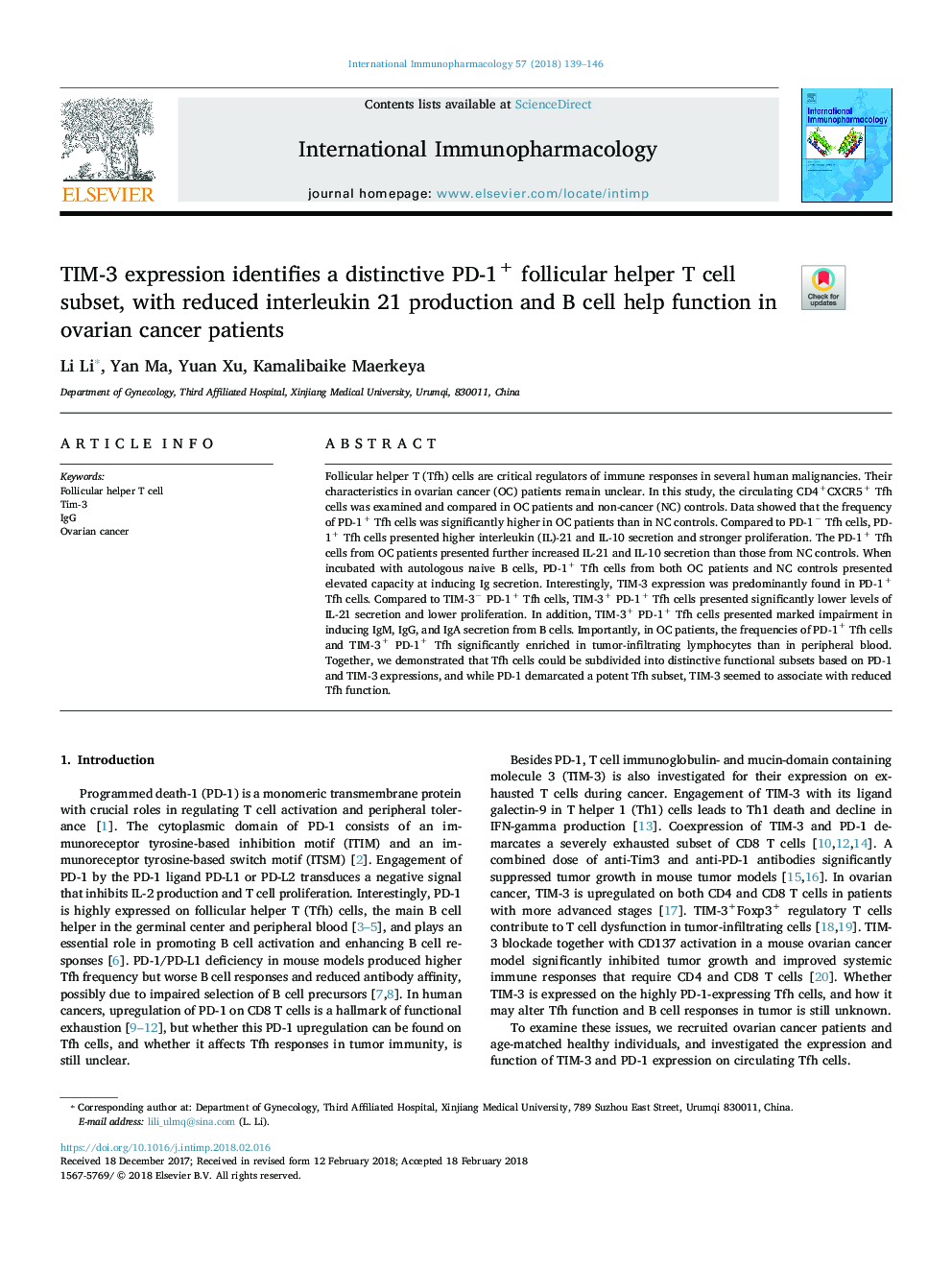| Article ID | Journal | Published Year | Pages | File Type |
|---|---|---|---|---|
| 8531297 | International Immunopharmacology | 2018 | 8 Pages |
Abstract
Follicular helper T (Tfh) cells are critical regulators of immune responses in several human malignancies. Their characteristics in ovarian cancer (OC) patients remain unclear. In this study, the circulating CD4+CXCR5+ Tfh cells was examined and compared in OC patients and non-cancer (NC) controls. Data showed that the frequency of PD-1+ Tfh cells was significantly higher in OC patients than in NC controls. Compared to PD-1â Tfh cells, PD-1+ Tfh cells presented higher interleukin (IL)-21 and IL-10 secretion and stronger proliferation. The PD-1+ Tfh cells from OC patients presented further increased IL-21 and IL-10 secretion than those from NC controls. When incubated with autologous naive B cells, PD-1+ Tfh cells from both OC patients and NC controls presented elevated capacity at inducing Ig secretion. Interestingly, TIM-3 expression was predominantly found in PD-1+ Tfh cells. Compared to TIM-3â PD-1+ Tfh cells, TIM-3+ PD-1+ Tfh cells presented significantly lower levels of IL-21 secretion and lower proliferation. In addition, TIM-3+ PD-1+ Tfh cells presented marked impairment in inducing IgM, IgG, and IgA secretion from B cells. Importantly, in OC patients, the frequencies of PD-1+ Tfh cells and TIM-3+ PD-1+ Tfh significantly enriched in tumor-infiltrating lymphocytes than in peripheral blood. Together, we demonstrated that Tfh cells could be subdivided into distinctive functional subsets based on PD-1 and TIM-3 expressions, and while PD-1 demarcated a potent Tfh subset, TIM-3 seemed to associate with reduced Tfh function.
Related Topics
Life Sciences
Immunology and Microbiology
Immunology
Authors
Li Li, Yan Ma, Yuan Xu, Kamalibaike Maerkeya,
